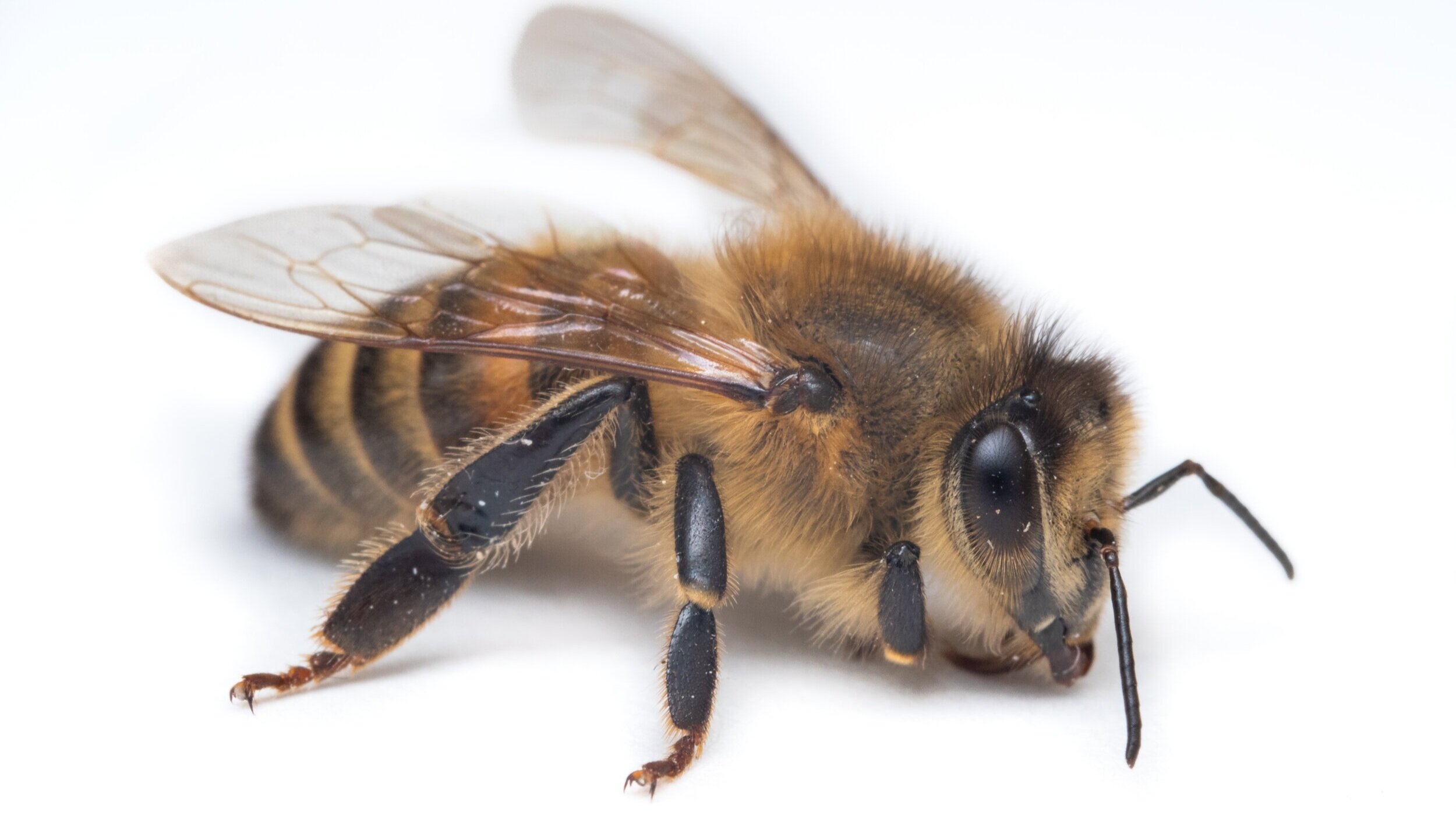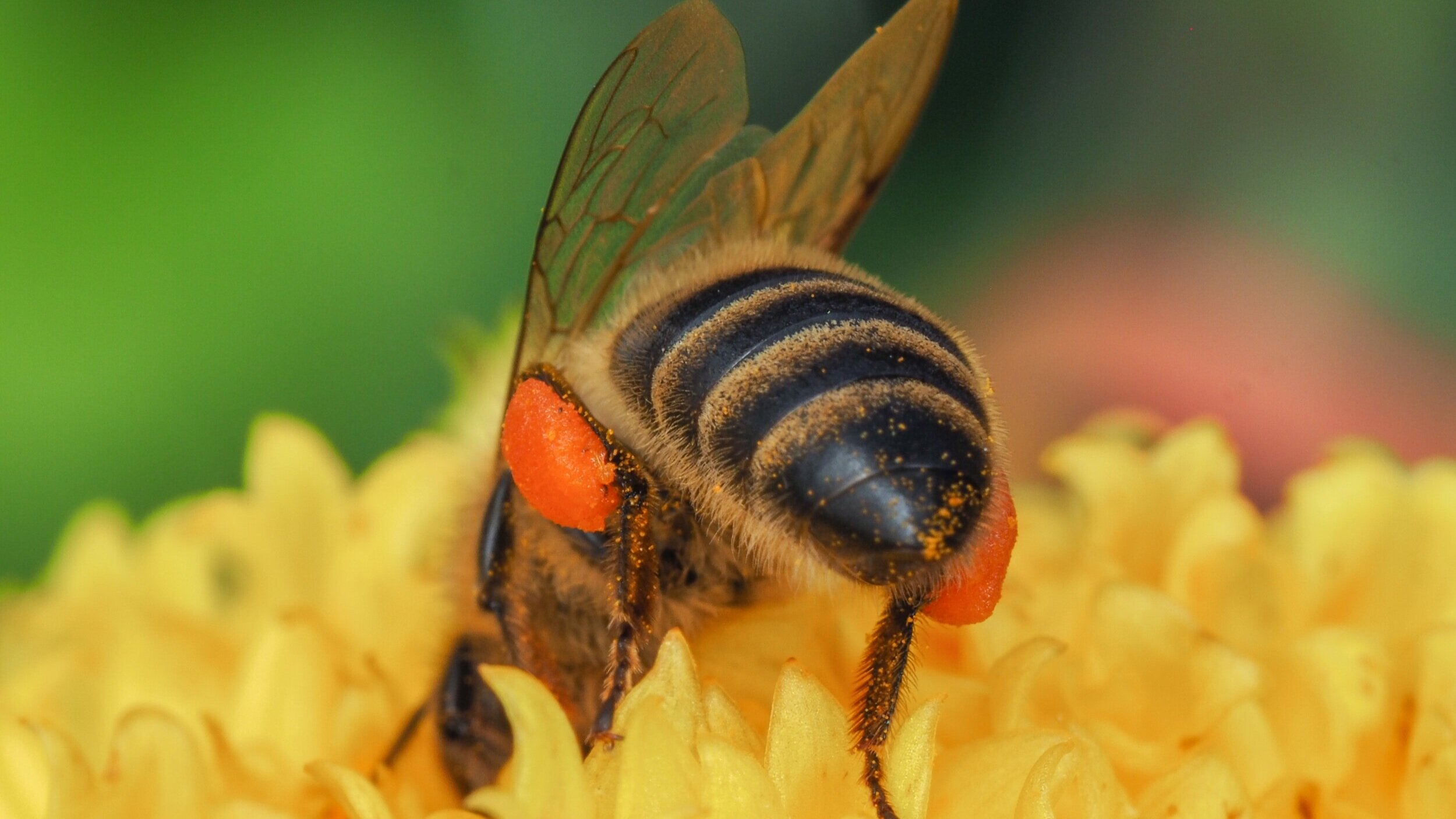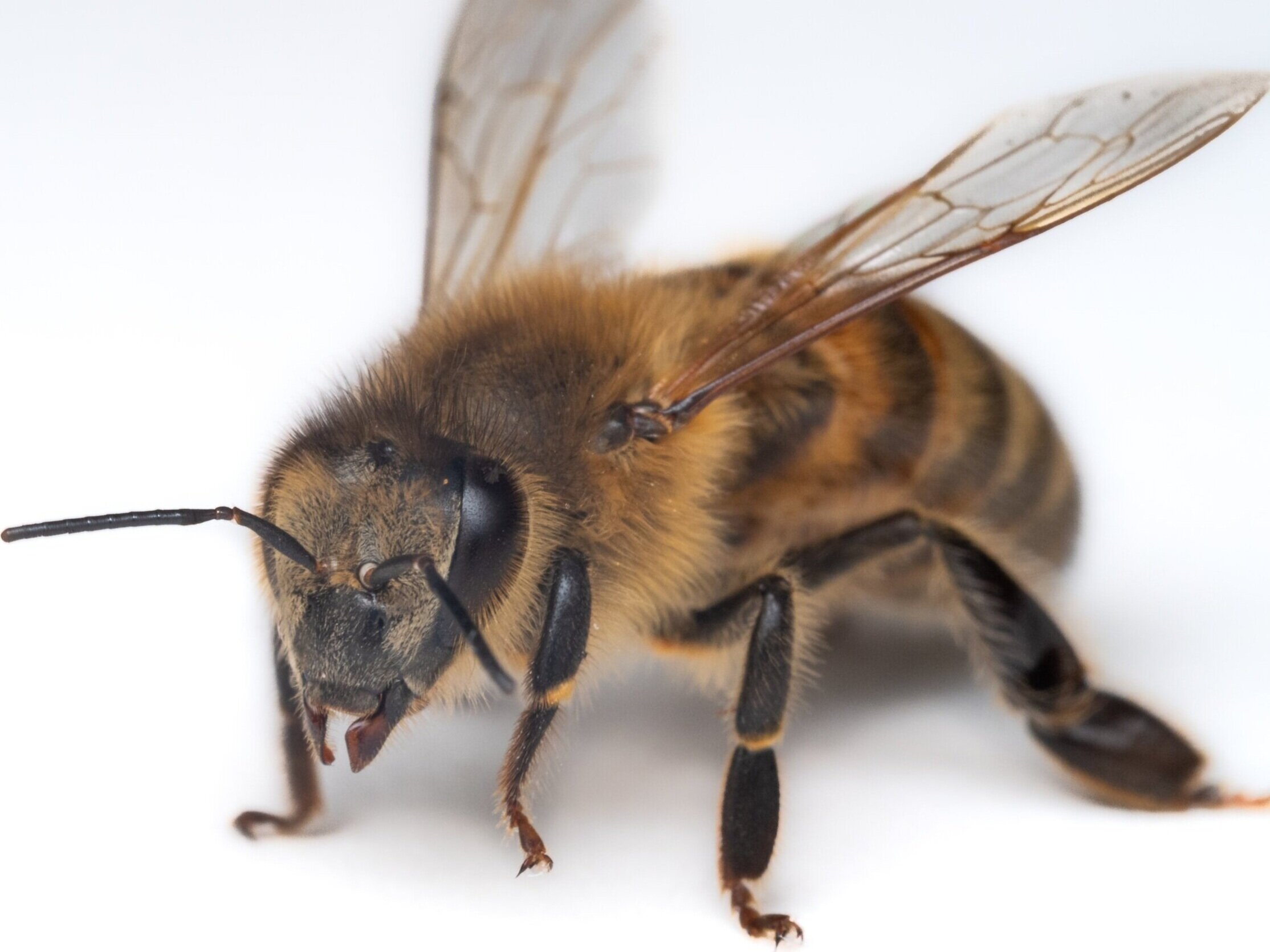The most recognizable bee in the world, European honey bee workers can be seen foraging on all types of flowers all warm season. Did you know that foraging is just a small portion of the work they do? From foraging for food, rearing the brood, caring for the queen, hive hygiene, processing and storing honey, and guarding the hive - these busy little bees sure have their work cut out for them! Read on to learn all about honey bee workers.
Scientific Name: Apis mellifera
Common Name: Honey bee (worker)
Family: Apidae
Species Range: Every continent except Antarctica!
Identification Tips: Honey bee workers are the most commonly identifiable bees. They are dainty in stature with golden-blonde fuzz on their heads and thoraxes. Their abdomens are usually striped in brown and gold. Worker bees also have widened back legs with a groove for carrying pollen, and can often be seen with “pollen pants” on their back legs.
Nesting Habits: European honey bees are colony-dwelling, and nest inside large cavities like hives, tree hollows, house sides, you name it, with parallel beeswax combs to hold developing brood and food.

Preferred Forage: Honey bees are generalist foragers, seeking nectar and pollen from nearly every type of flowering plant. When providing forage for honey bees, we can do the most good by planting early spring blooms, and late fall blooms when other floral resources are scarce.
Active Season: Honey bees are ‘active’ year-round, staying inside the hive and eating honey through the winter. They will leave the hive any day that temperatures are above 55F and there are blooms to forage on (late March through October in the PNW).

Fun Fact: Honey bee workers are the only bees that die after stinging. Their stingers have jagged barbs that hook underneath the target’s skin. This rips the venom sack out of the stinging bee, and delivers a powerful punch to the threat, hopefully deterring them from the behavior that caused the incident. This is ultimately fatal to the individual worker bee, but this adaptation greatly increases colony survival as a whole.
